Key takeaways:
- Data ethics encompasses principles of transparency, consent, and accountability, which are essential for building trust and protecting user privacy.
- Challenges include balancing innovation with ethical considerations and keeping up with evolving data regulations.
- Personal experiences highlight the importance of ethical diligence and the real-world consequences of data mishandling.
- Best practices for ethical programming involve prioritizing transparency, implementing robust data governance, and fostering an ethical mindset in development teams.
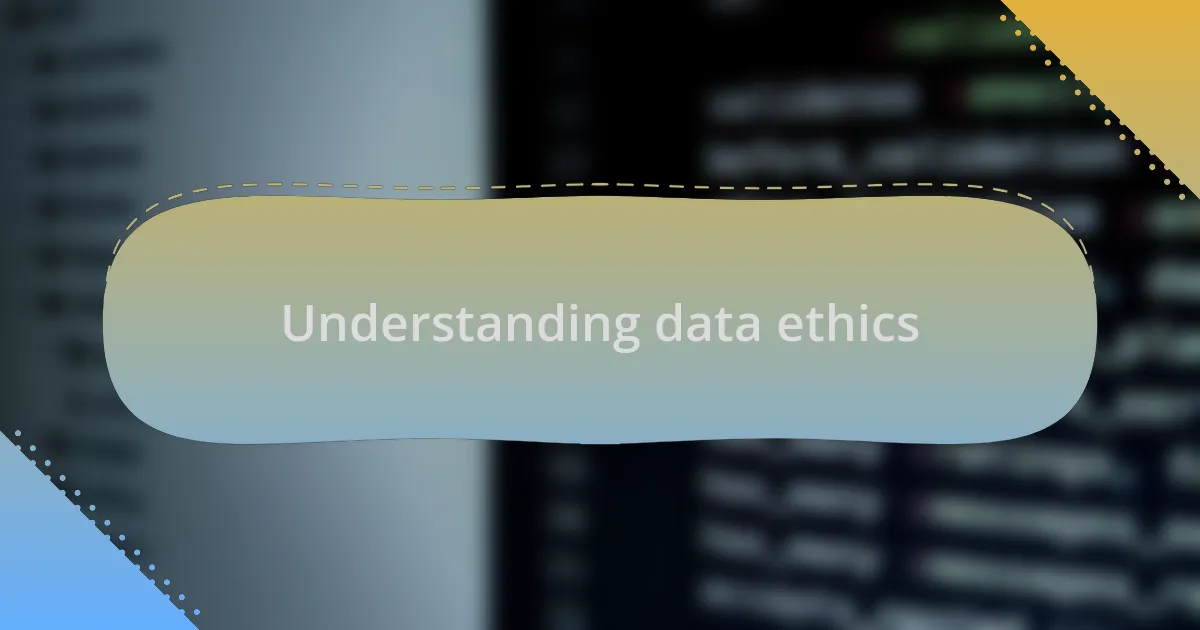
Understanding data ethics
Understanding data ethics is not just about compliance; it’s about the principles that guide our use of data in a responsible manner. I remember working on a project where we had to handle sensitive user information. It struck me how easily data can be misused, and I couldn’t shake the feeling that, as programmers, we have a moral obligation to protect our users’ privacy.
When I think about data ethics, I often ask myself: Who truly owns the data we collect? This question isn’t merely theoretical. In my experience, it leads to deep discussions about consent, transparency, and the power dynamics between users and organizations. It’s fascinating—and a bit unsettling—how the decisions we make can significantly impact people’s lives.
Moreover, reflecting on data ethics extends beyond individual projects; it fosters a culture of accountability in the tech community. I’ve found that having open conversations with peers about these ethics can encourage a more thoughtful approach to programming. Are we creating value, or are we inadvertently perpetuating harm? The answers to these questions can shape not just our projects, but the entire landscape of technology.
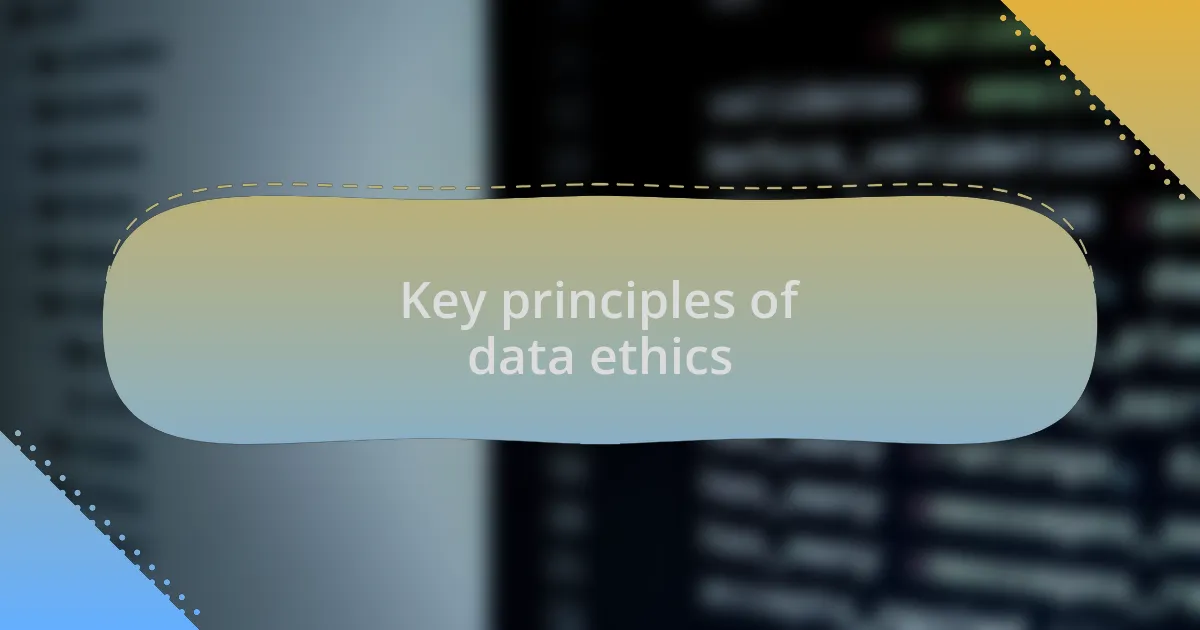
Key principles of data ethics
One key principle of data ethics is transparency. I recall a project where we implemented a feature to track user behavior. By being upfront about this tracking—explaining why data was collected and how it would be used—not only did we build trust with our users, but we also saw increased engagement. Isn’t it interesting how sharing our intentions can strengthen relationships?
Another vital aspect is consent. I vividly remember a time when a colleague used data without ensuring users were adequately informed about its usage. This oversight sparked fierce debates among our team about the ethical implications. It made me realize that gaining informed consent is not just a checkbox; it’s about respecting users’ autonomy. How often do we pause to consider whether our users truly understand what they’re agreeing to?
Lastly, we shouldn’t overlook accountability. In another instance, I encountered a situation where a data breach occurred, impacting many users. The response was crucial; admitting fault and taking corrective action demonstrated our commitment to ethical standards. It’s a reminder that accountability isn’t just a practice—it’s a philosophy that should permeate our approach to data collection and use. Are we prepared to stand behind our decisions in a moment of crisis?
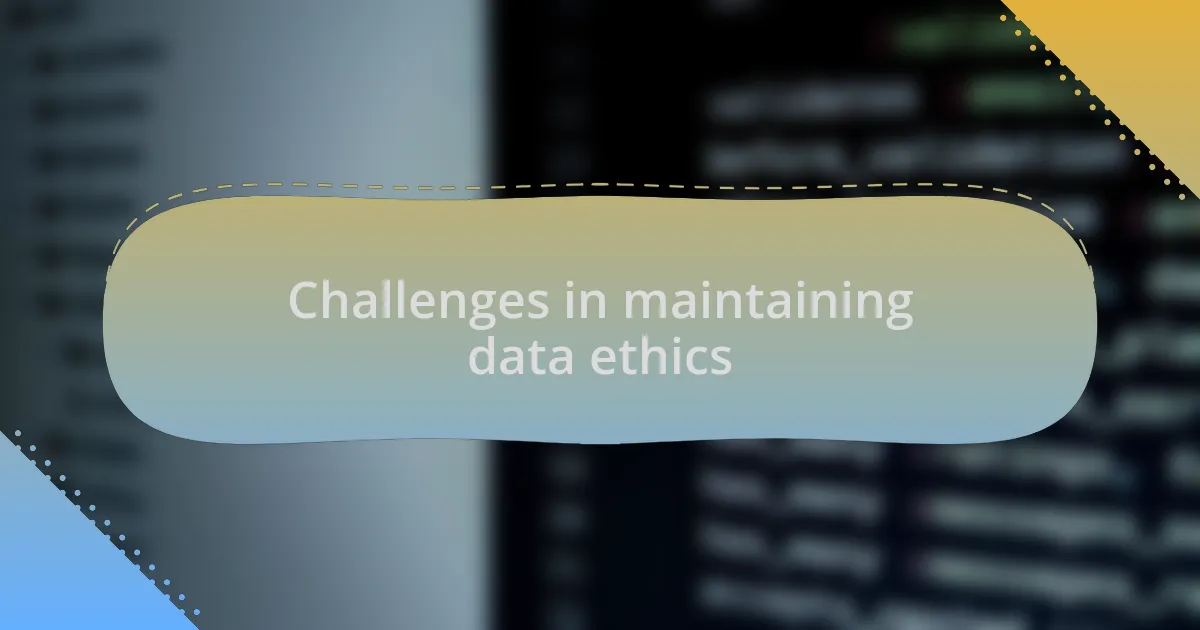
Challenges in maintaining data ethics
Maintaining data ethics is fraught with challenges that often arise in everyday scenarios. For example, I once participated in a project where the pressure to deliver results led to corners being cut in data collection practices. It struck me then how easily the pursuit of efficiency can overshadow ethical considerations. Have you ever wondered how quickly we can compromise our values in the name of productivity?
Moreover, balancing the use of data for innovation while respecting user privacy can feel like walking a tightrope. I recall a workshop where we brainstormed new features leveraging user data but found ourselves in heated discussions about the implications. It was a lightbulb moment for me; we had to strike a balance between creativity and responsibility. How do we ensure that our innovative solutions don’t come at the cost of user trust?
Finally, one of the most daunting obstacles is the rapidly evolving landscape of data regulations. As someone who enjoys keeping up with changes in technology, I often find it challenging to keep pace with laws like GDPR or CCPA. I remember feeling overwhelmed as new legislation would surface, requiring immediate changes to our practices. It made me question: are we truly prepared to navigate these complexities while maintaining our ethical commitments?
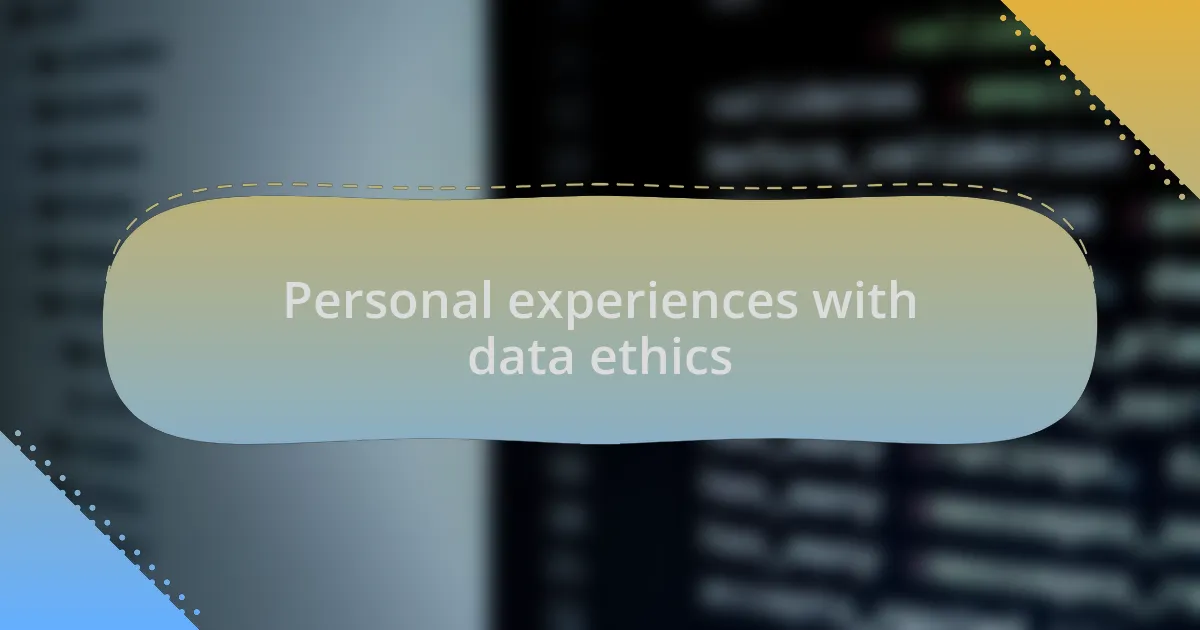
Personal experiences with data ethics
In my early days as a developer, I encountered a situation that made me rethink my approach to user data. I was part of a team that had access to sensitive customer information, and one afternoon, someone suggested we use it for an unapproved marketing campaign. I felt a wave of unease wash over me. The thought of exploiting user trust for short-term gains still lingers in my mind. How can we, as professionals, justify actions that can harm those we serve?
There was a time when I accidentally shared a dataset publicly, believing it was anonymized. A week later, I received an email from a concerned user pointing out that exposed data could easily be de-anonymized. I felt a knot in my stomach; I realized the immense responsibility that comes with handling data, and how a single oversight could lead to real-world consequences. It was a stark reminder for me: are we truly aware of the risks we take with every decision related to data?
Reflecting on my experience at a tech conference, where discussions about data ethics were especially vibrant, I found myself engaging with professionals who had faced similar dilemmas. Sharing stories of ethical practices and the missteps made me appreciate the collective journey we are on. I still consider the question raised during that event: How do we cultivate a culture of ethical diligence among ourselves while pushing the boundaries of innovation?
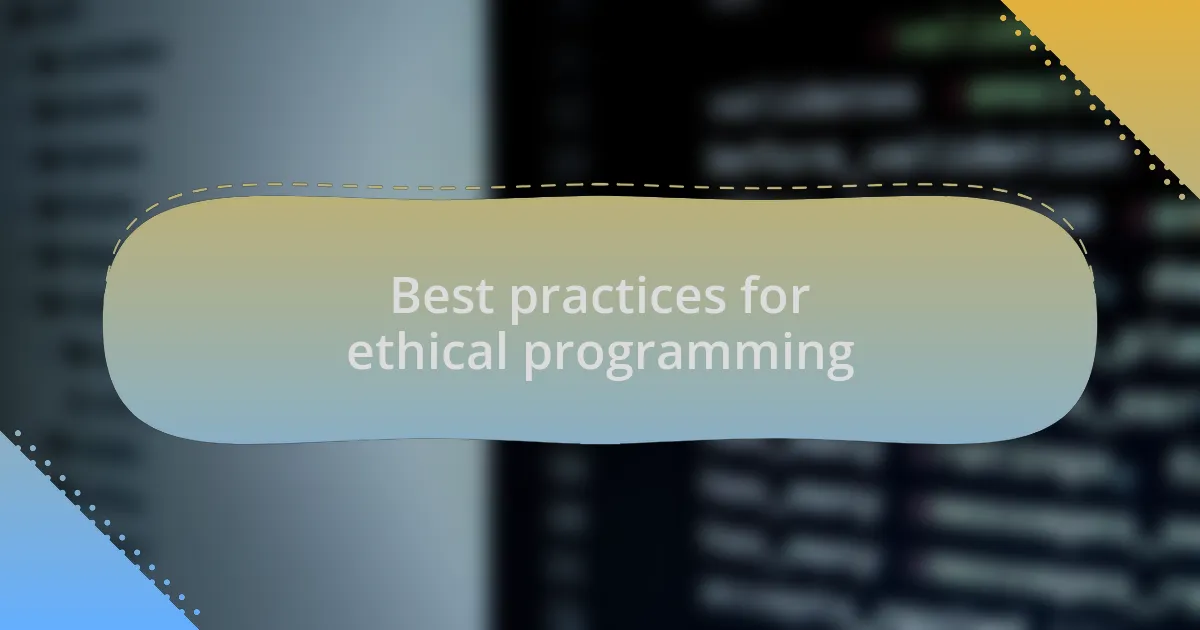
Best practices for ethical programming
When it comes to ethical programming, one of the best practices I’ve adopted is to prioritize transparency in my work. Early in my career, I witnessed a project where the development team obscured how user data was being used. It felt unsettling, and I often wondered, what trust are we building with our users if we’re not honest about our methods? Now, I encourage open conversations about data usage within my teams, fostering an environment where ethical considerations are a shared responsibility.
Another key aspect is implementing robust data governance. I remember a conversation with a colleague who led a small startup that had to navigate a data breach. The fallout impacted their reputation for years, and it made me realize how critical it is to have strong policies in place. Reflecting on that, I now incorporate regular audits and compliance checks into my workflow. It’s not just about preventing breaches; it’s about creating a culture where everyone understands their role in protecting user data.
Lastly, promoting an ethical mindset during the development process is essential. I often engage in discussions with peers about potential biases in algorithms, as I’ve seen firsthand how they can lead to unintended discrimination. I ask myself, and others, are we genuinely considering the impact of our work? By questioning and challenging our assumptions in team meetings, we can develop software solutions that respect user diversity and foster inclusivity.